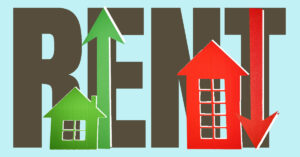On the face of it, there isn’t much to like about the outlook for the U.S. housing market. In April 2020 alone, more than 20 million Americans lost their jobs. A month later, more than 4 million homeowners had signed up for federal forbearance programs to pause their mortgage payments. Many small businesses were shut down and it wasn’t clear how many would reopen. And COVID-19 was still claiming the lives of several hundred Americans per day this past June.
In spite of the uncertainty about the health and welfare of the nation, however, housing experts not only downplayed the possibility of a prolonged depression in home sales, they were forecasting a fairly solid year for transactions and purchase mortgage originations.
“I’m actually kind of bullish on the market myself,” says Rick Sharga, president of real estate consultancy CJ Patrick Company. And there were reasons for optimism as the worst economic impacts from the corona-virus crisis seemed to be fading. Every state had at least partially reopened. In April 2020, home sales were down an abysmal 18% on a monthly basis, according to the National Association of Realtors. By May 2020, home sales were still down but only by 9.7% compared to the previous month. (Still, May home sales were down 27% year over year.)
The jobs that have been lost so far have been overly skewed toward relatively low-paying hourly wage jobs.
Rick Sharga, President, CJ Patrick Company
Sharga says the housing market should avoid a major downturn for the same reasons that the outlook had been strong prior to the coronavirus outbreak this past March. With lockdowns ending, Americans began shopping for homes again. The sizable millennial generation that is coming of age means buyer demographics remain favorable. Interest rates were at record lows. And even though millions remained out of work this past June, the brunt of job losses were in low-paying service sectors, according to a report from the Center on Budget and Policy Priorities.
“The jobs that have been lost so far have been overly skewed toward relatively low-paying hourly wage jobs,” Sharga says. “Homeownership rates among that cohort typically are very low. So, it appears that most of the people who’ve been hit the hardest by the economic downturn are renters and, for the most part, renters who probably weren’t going to be buying a house soon anyway.”
As of this past June, the ingredients for a stable market seemed to be in place. It didn’t seem likely, for example, that the typical home-owner was at risk of being seriously underwater on their mortgage — a situation where the home value is significantly less than the outstanding mortgage debt. This is a potentially ruinous position for an unemployed homeowner who can’t pay their mortgage as it often ends in foreclosure. The combination of strong buyer demand and low inventory of for-sale homes were likely to keep home prices and the number of underwater borrowers under control, Sharga says.
The Mortgage Bankers Association (MBA) projected that purchase mortgage volume would decline substantially on an annual basis in the second and third quarters of this year but recover strongly by the fourth quarter. As of this past May, the trade group estimated that fourth-quarter 2020 purchase mortgage volume would rise nearly 7% year over year to $335 billion. For the year, MBA predicted that purchase originations would decline by only 2% compared to 2019.
Still, housing analysts were concerned that an expected spike in home sales this summer may represent a temporary rebound. If people don’t go back to work relatively soon — or if a potential second wave of COVID-19 causes states to shut down again this fall — these analysts believe the housing market could be in serious trouble.
“It really depends on how quickly businesses come back into the picture and start rehiring,” says Joel Kan, MBA’s associate vice president of economic and industry forecasting. Kan notes that every state will recover differently depending on when their economies fully reopen. Also, the timing of the recovery was still unclear this past June because the health crisis wasn’t over.
“It’s still pretty foggy in terms of how sustainable this is, because there’s just so many variables in play,” Kan says. “If we don’t see the labor market turned around, that’s when we might see some trouble for the purchase market, because a lot of that really does depend on basic economic well-being.”
In June 2020, analysts expected mortgage delinquencies to continue rising for several more months despite the payment relief offered by Fannie Mae, Freddie Mac and the Federal Housing Administration.
“If there’s no end in sight to forbearance and we’re in the foreclosure moratoriums as well, the short term is making everything look better than it is,” says Daren Blomquist, vice president of market economics at Auction.com. “If those [measures] are extended for too long with no clear exit strategy, then you actually could see it backfire on the housing market. You can only get away with a kicking-the-can-down-the-road strategy for so long.”
Blomquist says it would likely take a full year of economic distress for the housing market to experience a huge spike in foreclosures. An extended downturn, however, would ultimately push a lot of homes onto the market, causing lenders to tighten access to mortgages and drying up demand from buyers.
“There are a number of ways that it becomes a ticking time bomb,” Blomquist says. ●





